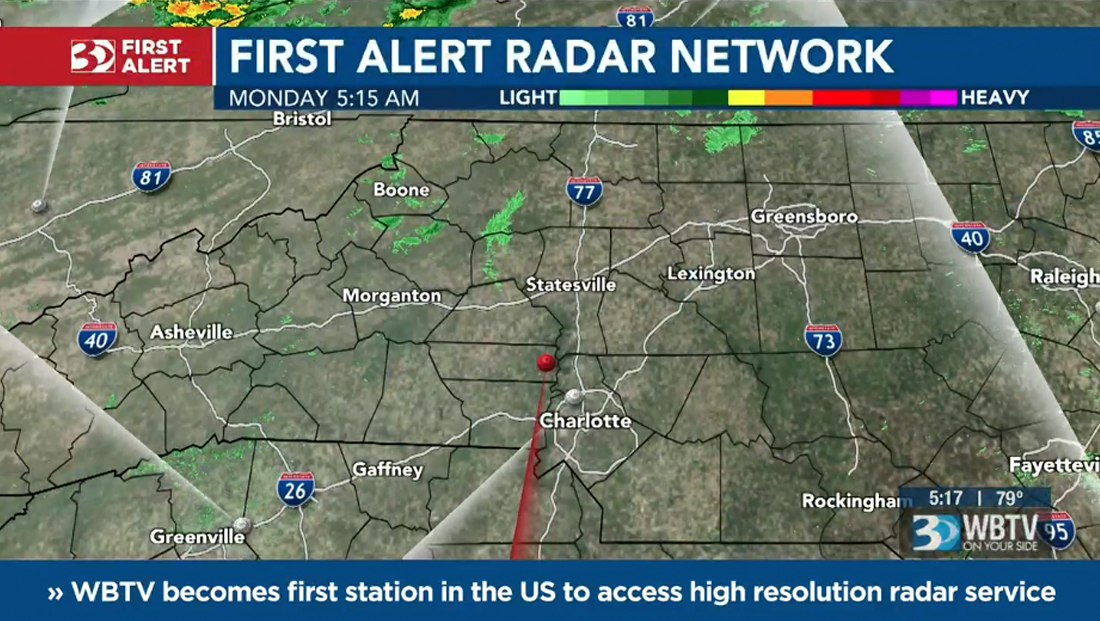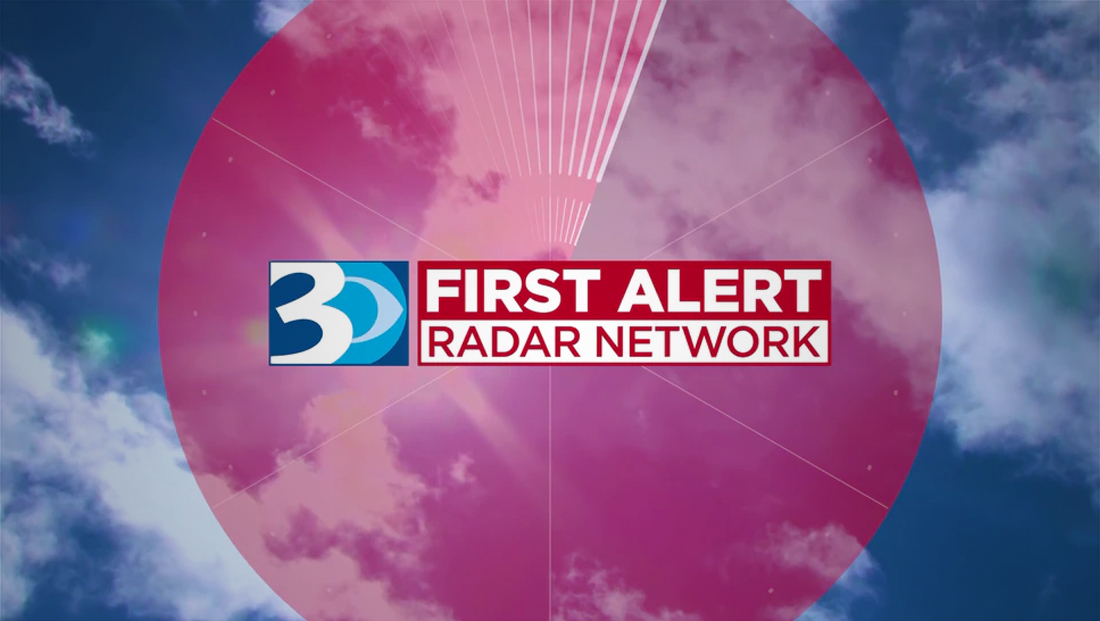Charlotte station adds high resolution radar system to fill in ‘gaps’

Weekly insights on the technology, production and business decisions shaping media and broadcast. Free to access. Independent coverage. Unsubscribe anytime.
WBTV in Charlotte, North Carolina, has announced it is the first U.S. TV station to use a new, high-resolution radar offering.
The station signed on with Climavision to utilize its high-resolution, dual-polarization X-band radar sold as a “radar-as-a-service” offering.
Like most media outlets, WBTV relies on a network of federally-owned National Weather Service radar towers from around the country to scan the skies and generate weather maps. Because the towers are taxpayer-funded, the resulting data is publicly available.
However, the city of Charlotte has “gaps” in its coverage due to the placement of radar towers and geography. The new tower is about 20 miles north of downtown, bringing it closer to the core coverage area.
Previously, the station had to rely on an NWS tower that was about 90 miles away in South Carolina. That distance not only affected the accuracy of scans but the natural curve of the Earth also meant storm systems lower in the atmosphere were overshot.
WBTV debuted its new tool Aug. 1, 2022 with much fanfare and explaining about how useful the system would be — but there wasn’t much action for it to pick up that day — though the station was able to take advantage of the higher resolution to zoom in and showcase smaller systems.

WBTV has referred to a “network” of radar towers on air for years and has moved the new Climavision tower under its “First Alert Radar Network” branding.
The tower’s X-band dual-polarity technology has a faster refresh rate than the S-band systems the NWS provides and can also deliver up to 10-times the resolution and more accurately pick up on atmospheric changes.
WBTV does not own the radar tower, but rather has a contract with Climavision to access the tower’s scans and data on a market-exclusive basis.
In many markets, TV stations supplement NWS-owned radar with their own radar towers. These systems can be pricey to install and maintain, but can also be critical forecasting and branding tools to help a station stand out in one of the most popular features of local news: Weather.
In some cases, stations own the radar system directly, while others license from a third-party and brand it under their own name.
NWS radar systems can take up to five minutes to complete a sweep and return imaging, which can be a crucial delay in severe weather situations. This means the scans can’t necessarily be called “live” — but updated technology from commercial installations are often branded under the banners “live” or “realtime.”




tags
Charlotte, Climavision, wbtv, Weather Radar System, X-Band Radar
categories
Broadcast Industry News, Featured, Local News, Weather